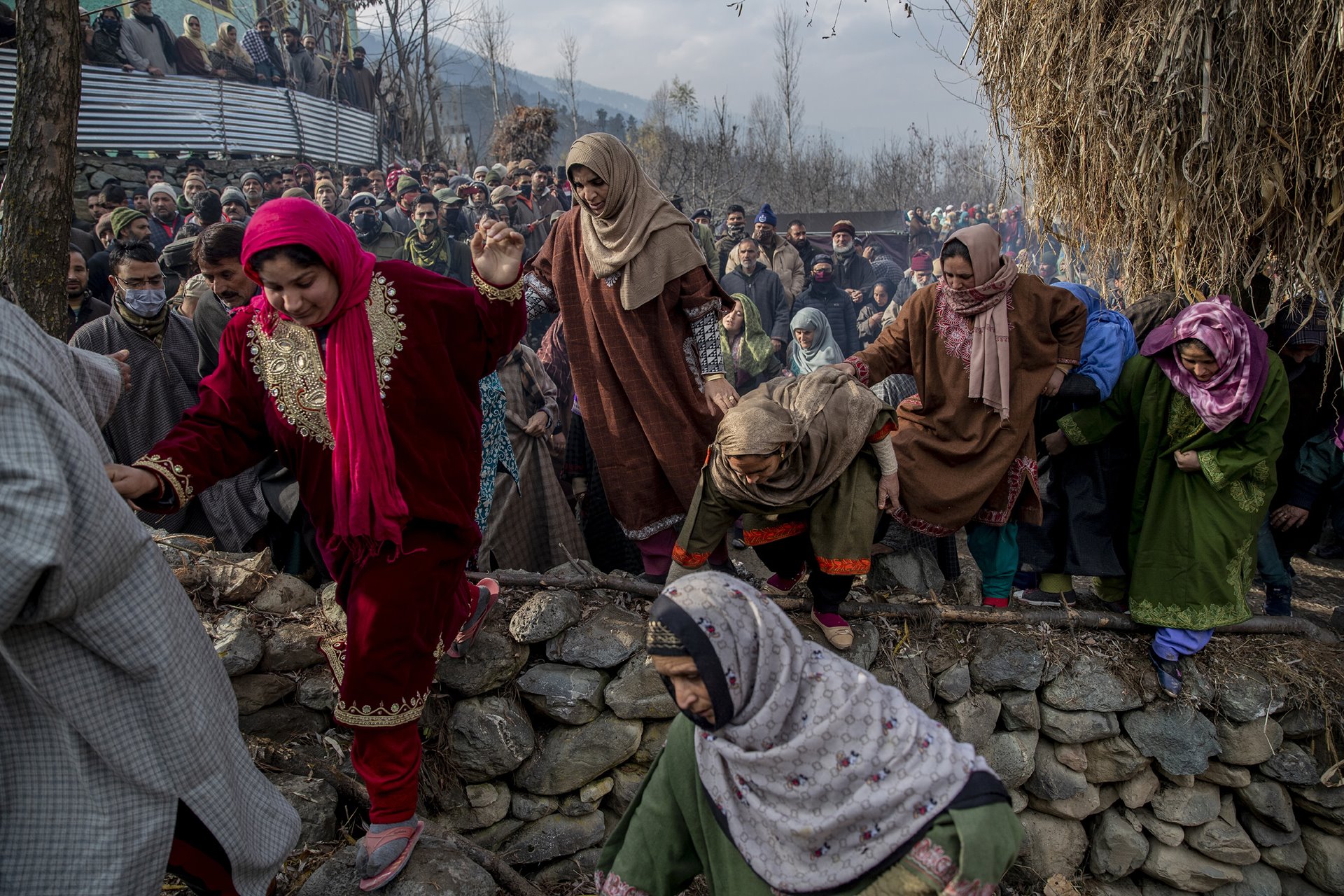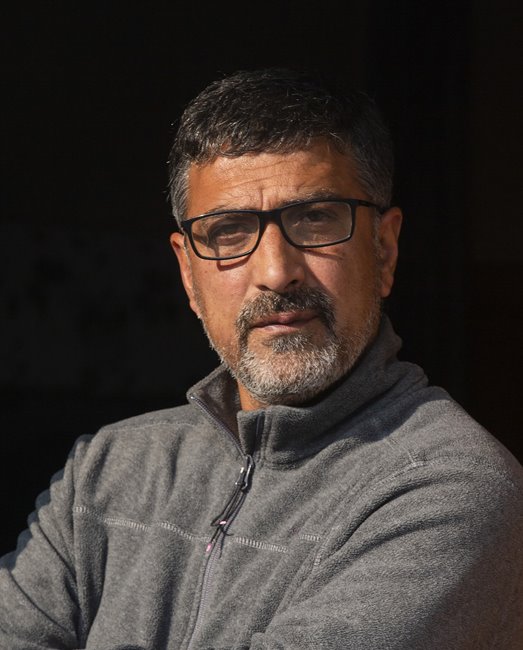Women cross a stone wall to join the funeral of Constable Rameez Ahmad Baba, who according toIndian police succumbed to his injuries after he was on a bus that was attacked by militants in theGanderbal district of Indian-administered Kashmir the previous day. At least 11 people were reportedinjured, and three killed in the attack.
This project documents ongoing unrest in the long-disputed region of Kashmir, dating back to 1947, when India and Pakistan gained independence from Britain. Both nations claim Kashmir in its entirety, and each administers a portion of the region. In Indian-administered Kashmir, rebels have been fighting Indian rule for decades, seeking to unite the territory, either under Pakistani rule or as an independent country. India says that Pakistan supports armed insurgency in Kashmir. Pakistan denies the charge, saying it provides moral and diplomatic support only.
In August 2019, after rising tensions and clashes both between India and Pakistan, and with separatists inside the territory, India removed the special status it had granted Indian-administered Kashmir, annulled its separate constitution, and split the region into two federal territories. Protests and clashes have continued since then, with India at times suspending 4G internet access and barring access to social media in the region. A ban on religious processions during the Muslim holy month of Muharram (which in 2021 took place in August and September) led to clashes between civilians and police. Kashmiri Muslims have long complained that the government is curbing their religious freedom on the pretext of maintaining law and order. Hundreds of Muslims took to the streets in Srinagar, the region’s largest city, chanting religious and pro-freedom slogans, meeting with a severe police response.
The photographer, a Kashmiri photojournalist, feels a heavy responsibility to bear witness to what is happening to his homeland.

